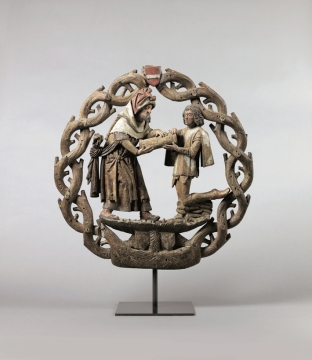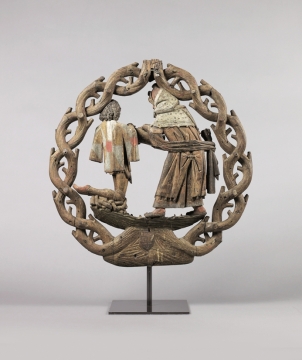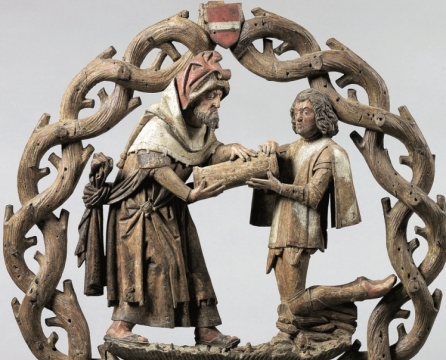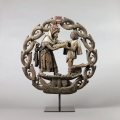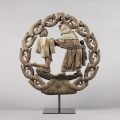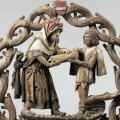Bruges workshop
1529
Type:
Sculpture
Material / technique:
Polychromed wood
Dimensions:
Diameter: c.64 cms
Type of acquisition:
Acquired by the Heritage Fund
Year of acquisition:
2007
Depository institution:
Museum van het Heilig Bloed, Bruges
